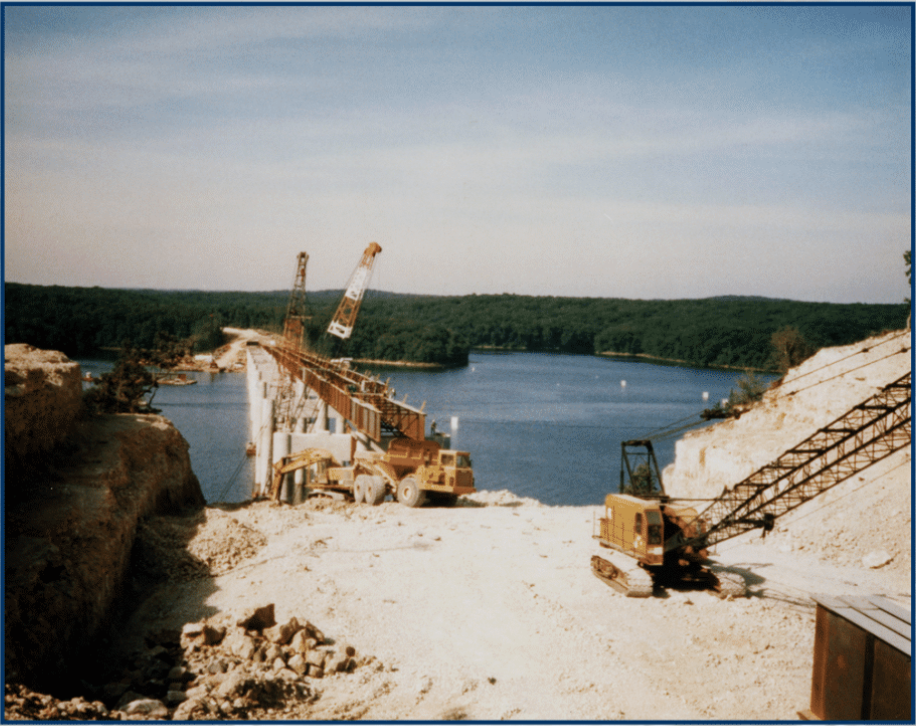The Community Bridge turned a lot of “nowhere” into one of Lake of the Ozarks’ hottest housing frontiers.
by Nathan Bechtold
Not very many years ago — in the early 1990s — the area of the Lake that is now known as Porto Cima and The Villages at Shawnee Bend was miles and miles of vacant shoreline. The geological twin of Horseshoe Bend didn’t even have a name. It was there, but almost no one lived there: much too far of a drive from the hub of the Lake’s activity in communities like Osage Beach, Lake Ozark, and Camdenton, and even too long of a drive down substandard roads from little west side towns like Sunrise Beach and Laurie.
But the bridge across the Lake that most folks know as “the toll bridge” is what changed everything. And though drivers may grumble about shelling out a few bucks every time they cross, the existence of high-end, still-growing Lake of the Ozarks communities like Porto Cima and The Villages as well as much of the growth of Sunrise Beach and Laurie are all indisputably thanks to the bridge.
The impetus to bridge the Lake was — unsurprisingly — an economic one. The Brown family, which owned the Lodge of Four Seasons, also owned a vast portion of Shawnee Bend, and wanted to find a way to bring development potential to it. They dreamed of a bridge.
It was the first project of its kind, and the idea was ambitious in part because of the many obstacles. Building the structure? No problem. But organizing and funding it relied on a brand-new legal mechanism that had never been used before.

Toll Bridge Construction
How The Toll Bridge Came To Be
There’s more to this story! Click to create a free account or sign in keep reading.
